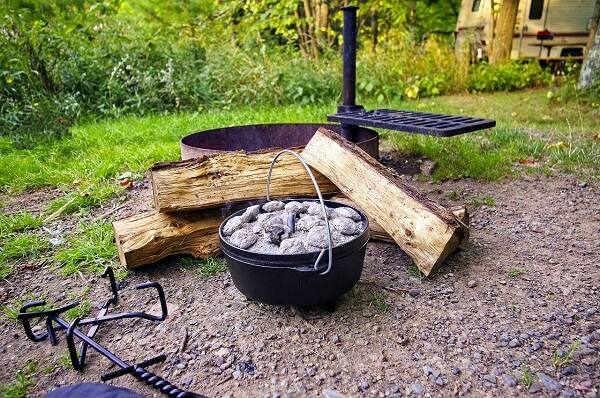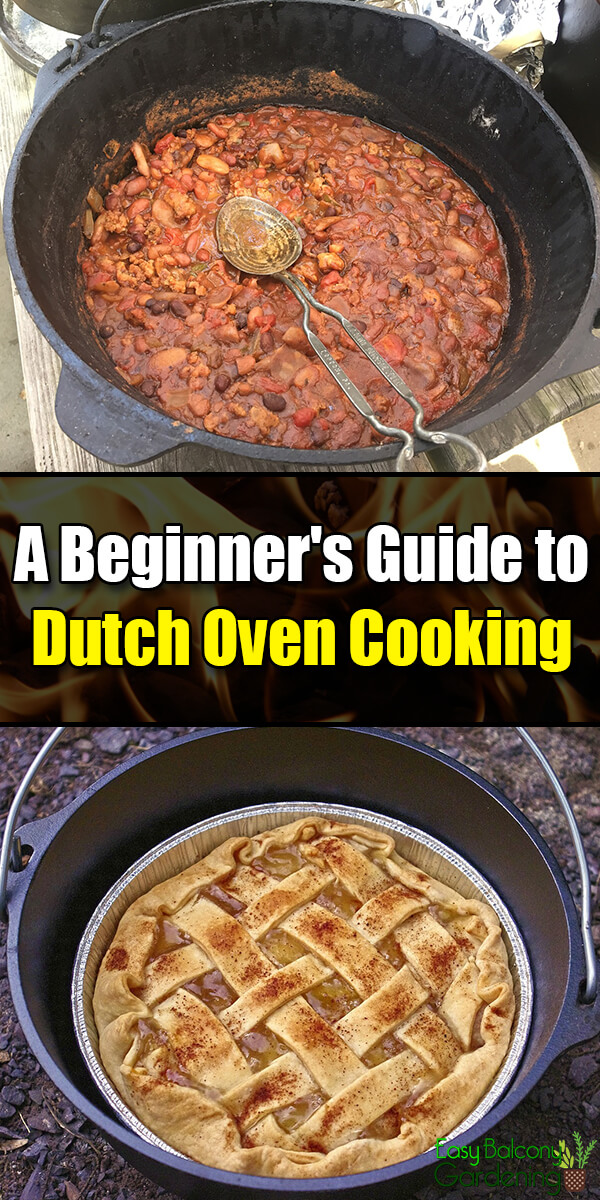If you like to cook, even as a beginner, you can include Dutch oven cooking as part of your learning important skills! It is also fun! Stack three ovens, and you can have a full meal Dutch oven cooking without relying on electricity. To top it all, you can enjoy good company, a campfire, and good scenery all at the same time!
The Oven Make Is Important When Dutch Oven Cooking!
Look for these requirements:
- Bail – must be long and sturdy, and could stand up on its opposite side at a 45º angle, to allow you easier access with positioning and repositioning when Dutch oven cooking
- Heat control – for better control of the heat when Dutch oven cooking at lower temperatures, select a deep oven. For faster heat to the center, select shorter standard ovens.
- Legs – short legs are not easy when Dutch oven cooking. Avoid those with short legs, as well as those that are very thin.
- Lid – should fit snugly to prevent steam from escaping from the dutch oven
- Lid handle – for ease when Dutch oven cooking, look for looped lid handle, as opposed to a cast one, for easy lid lifting
- Size – most Dutch oven recipes are for 12” ovens. If you are a beginning user, opt for 12” Dutch ovens.
- Tangs – look for molded ones
- Wall thickness – must be the same all around
Aluminum Oven vs. Cast Iron Oven
- A cast iron Dutch oven is about two-and-one-half times heavier than a cast aluminum one
- Cast aluminum does not rust, so you can easily wash it. Use mild soap and water.
- Cast iron needs to be seasoned as a protection from rust. Melting point of cast aluminum is 1200º; cast iron is 2000º.
Ready-to-Use Cast Iron Ovens
These ready-to-use cast iron Dutch ovens come to you already pre-seasoned.
- For first time use, rinse the cast iron Dutch oven with hot water. Do not use soap. Towel dry and air dry.
- For each use, either spray the cast iron Dutch oven with a non-stick cooking spray or wipe with Canola oil using a clean white cotton rag.
- After each cooking, clean the cast iron Dutch oven with a rough sponge and hot water. Dry thoroughly.
- While still warm, wipe all surfaces of the cast iron Dutch oven inside and outside with Canola oil or spray with nonstick coating spray.
What to Watch Out For
- Watch out for steam coming out of the oven when Dutch oven cooking. It can be that the lid is not a snug fit, or the temperature is too hot. Do not ignore it, as the turnout of your food will be unsatisfactory. In the case of too hot a temperature, either the top or the bottom of your food will be burnt.
- When not using the buried Dutch oven method, rotate the oven about 90º every quarter of the hour. First lift the lid, turn the oven clockwise, and put the lid back on facing the same direction when you first lifted it. Make sure that the lid number is in the same position during the Dutch oven cooking duration. This system will help prevent uneven browning or burnt spots. It also gives you the opportunity to check your food. The looks of the food will let you know if you need to adjust the temperature when Dutch oven cooking.








